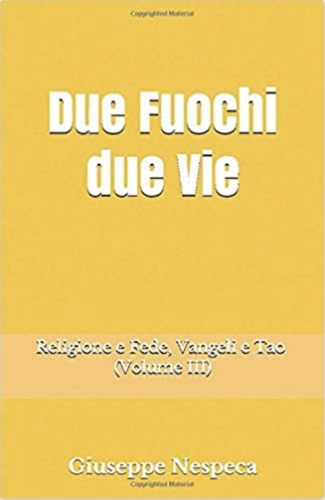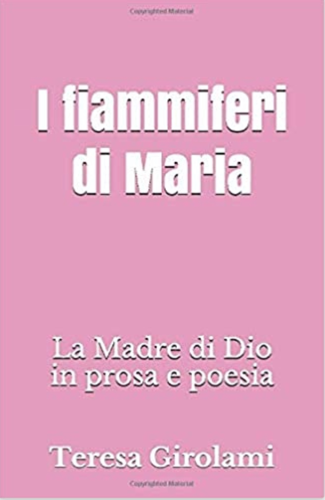1. The first and fundamental point of reference of the present catechesis are the universally known professions of the Christian faith. They are also called 'symbols of faith'. The Greek word 'symbolon' meant the half of a broken object (e.g. of a seal) that was presented as the sign of recognition. The broken parts were put together to verify the identity of the bearer. Hence the further meanings of the 'symbol': proof of identity, letters of credence and even a treaty or contract of which the 'symbolon' was the proof. The transition from this meaning to that of a collection or summary of the things referred to and documented was quite natural. In our case 'symbols' mean the collection of the main truths of faith, i.e. what the Church believes in. Systematic catechesis contains instructions on what the Church believes in, i.e. the contents of the Christian faith. Hence also the fact that 'symbols of faith' are the first and fundamental point of reference for catechesis.
2. Among the various ancient 'symbols of faith', the most authoritative is the 'apostolic symbol', of very ancient origin and commonly recited in the 'prayers of the Christian'. It contains the main truths of the faith transmitted by the apostles of Jesus Christ. Another famous ancient symbol is the 'Nicene-Constantinopolitan' symbol: it contains the same truths of the apostolic faith authoritatively elucidated in the first two ecumenical councils of the universal Church: Nicaea (325) and Constantinople (381). The custom of the 'symbols of faith' proclaimed as the fruit of the Church's Councils has also been renewed in our century: in fact, after the Second Vatican Council, Pope Paul VI pronounced the 'profession of faith' known as the Creed of the People of God (1968), which contains the entirety of the truths of the Church's faith with special consideration of those contents to which the last Council had given expression, or those points around which doubts had been raised in recent years.
The symbols of faith are the main point of reference for the present catechesis. They, however, refer to the whole of the 'deposit of the word of God', constituted by Holy Scripture and the apostolic tradition, being only a concise synthesis of it. Through the professions of faith, therefore, we too aim to go back to that immutable "deposit", on the basis of the interpretation that the Church, assisted by the Spirit, has given it over the centuries.
3. Each of the aforementioned 'symbols' begins with the word 'creed'. Each of them in fact serves not so much as instruction but as profession. The contents of this profession are the truths of the Christian faith: all are rooted in this first word 'I believe'. And it is precisely on this expression 'I believe' that we wish to focus in this first catechesis.
The expression is present in everyday language, even independently of any religious content, and especially of Christian content. 'I believe you' means: I trust you, I am convinced that you speak the truth. "I believe in what you say" means: I am convinced that the content of your words corresponds to objective reality.
In this common use of the word 'I believe', certain essential elements are emphasised. "To believe" means to accept and recognise as true and corresponding to reality the content of what is said, i.e. the words of another person (or even of several persons), because of his (or their) credibility. This credibility decides in a given case the particular authority of the person: the authority of truth. Thus by saying 'I believe', we are simultaneously expressing a twofold reference: to the person and to the truth; to the truth, in view of the person who enjoys particular credibility.
4. The word 'I believe' appears very often in the pages of the Gospel and throughout Holy Scripture. It would be very useful to compare and analyse all the points in the Old and New Testaments that enable us to grasp the biblical meaning of 'believing'. Alongside the verb 'to believe' we also find the noun 'faith' as one of the central expressions throughout the Bible. We even find a certain type of "definitions" of faith, such as for example: "faith is the foundation of things hoped for and proof of things not seen" from the Letter to the Hebrews (Heb 11:1).
These biblical data have been studied, explained, developed by the Fathers and theologians over two thousand years of Christianity, as the enormous exegetical and dogmatic literature we have at our disposal attests. As in 'symbols', so in all theology, 'believing', 'faith' is a fundamental category. It is also the starting point of catechesis, as the first act with which we respond to God's revelation.
5. In the present meeting we will limit ourselves to one source, which however summarises all the others. It is the conciliar constitution Dei Verbum of Vatican II. We read the following: "It pleased God in his goodness and wisdom to reveal himself and to manifest the mystery of his will (cf. Eph 1:9), through which men, through Christ, the Word made flesh in the Holy Spirit, have access to the Father and are made sharers in the divine nature . . . (cf. Eph 2:18; 2 Pet 1:4)" (Dei Verbum, 2).
"To the God who reveals is due the obedience of faith (cf. Rom 16:26; 1:5; 2 Cor 10:5-6), by which man freely surrenders himself to God in his entirety by lending him 'the full obedience of intellect and will' (Vatican Council I, Dei Filius, 3) and voluntarily consenting to the revelation given by him" (Dei Verbum, 5).
In these words of the conciliar document is contained the answer to the question: what does it mean to "believe". The explanation is concise, but condenses a great wealth of content. We will have to penetrate more extensively into this explanation of the Council later on, which has a scope equivalent to that of a technical definition, so to speak.
One thing is first of all obvious: there is a genetic and organic link between our Christian 'creed' and that particular 'initiative' of God himself, which is called 'revelation'.
Therefore, catechesis on the 'creed' (faith) must be carried out together with catechesis on divine revelation. Logically and historically, revelation precedes faith. Faith is conditioned by revelation. It is man's response to divine revelation.
Let us say right now that it is possible and right to give this answer, because God is credible. No one is like him. No one possesses the authority of truth like it. In no case is the conceptual and semantic value of the word so usual in human language: 'I believe', 'I believe you', realised as in faith in God.
[Pope John Paul II, General Audience 13 March 1985]
Faith in Christ
1. Looking at the primary objective of the Jubilee, which is the "strengthening of faith and of the witness of Christians" (Tertio millennio adveniente, n. 42), after outlining in previous catecheses the basic characteristics of the salvation offered by Christ, today we pause to reflect on the faith he expects of us.
"The obedience of faith", Dei Verbum teaches, "must be given to God as he reveals himself" (n. 5). God revealed himself in the Old Covenant, asking of the people he had chosen a fundamental response of faith. In the fullness of time, this faith is called to be renewed and increased, to respond to the revelation of the incarnate Son of God. Jesus expressly asks for it when he speaks to his disciples at the Last Supper: "Believe in God, believe also in me" (Jn 14:1).
2. Jesus had already asked the group of the 12 Apostles to profess their faith in his person. At Caesarea Philippi, after questioning his disciples about the people's opinion of his identity, he asks: "But who do you say that I am?" (Mt 16:15). The reply comes from Simon Peter: "You are the Christ, the Son of the living God" (16:16).
Jesus immediately confirms the value of this profession of faith, stressing that it stems not only from human thought idea but from heavenly inspiration: "Blessed are you, Simon Bar-Jona! For flesh and blood has not revealed this to you, but my Father who is in heaven" (Mt 16:17). These statements, in strongly Semitic tones, indicate the total, absolute and supreme revelation: the one that concerns the person of Christ, Son of God.
Peter's profession of faith will remain the definitive expression of Christ's identity. Mark uses this same expression to begin his Gospel (cf. Mk 1:1) and John refers to it at the end of his, saying that he has written his Gospel so that you may believe "that Jesus is the Christ, the Son of God", and that in believing you may have life in his name (cf. Jn 20:31).
3. In what does faith consist? The Constitution Dei Verbum explains that by faith, "man freely commits his entire self to God, making 'the full submission of his intellect and will to God who reveals'" (n. 5). Thus faith is not only the intellect's adherence to the truth revealed, but also a submission of the will and a gift of self to God revealing himself. It is a stance that involves one's entire existence.
The Council also recalls that this faith requires "the grace of God to move [man] and assist him; he must have the interior helps of the Holy Spirit, who moves the heart and converts it to God, who opens the eyes of the mind and 'makes it easy for all to accept and believe the truth'" (ibid.). In this way we can see how, on the one hand, faith enables us to welcome the truth contained in Revelation and proposed by the Magisterium of those who, as Pastors of God's People, have received a "sure charism of truth" (Dei Verbum, n. 8). On the other hand, faith also spurs us to true and deep consistency, which must be expressed in all aspects of a life modeled on that of Christ.
4. As a fruit of grace, faith exercises an influence on events. This is wonderfully seen in the exemplary case of the Blessed Virgin. Her faith-filled acceptance of the angel's message at the Annunciation is decisive for Jesus' very coming into the world. Mary is the Mother of Christ because she first believed in him.
At the wedding feast in Cana, Mary, obtains the miracle through her faith. Despite Jesus' reply, which does not seem very favourable, she keeps her trustful attitude, thus becoming a model of the bold and constant faith which overcomes obstacles.
The faith of the Caananite woman was also bold and insistent. Jesus countered this woman, who had come to seek the cure of her daughter, with the Father's plan which restricted his mission to the lost sheep of the house of Israel. The Caananite replied with the full force of her faith and obtained the miracle: "O woman! Great is your faith! Be it done for you as you desire" (Mt 15:28).
5. In many other cases the Gospel witnesses to the power of faith. Jesus expresses his admiration for the centurion's faith: "Truly, I say to you, not even in Israel have I found such faith" (Mt 8:10). And to Bartimaeus: "Go your way your faith has made you well" (Mk 10:52). He says the same thing to the woman with a haemorrhage (cf. Mk 5:34).
His words to the father of the epileptic who wanted his son to be cured are no less striking: "All things are possible to him who believes" (Mk 9:23).
The role of faith is to co-operate with this omnipotence. Jesus asks for this co-operation to the point that upon returning to Nazareth, he works almost no miracles because the inhabitants of his village did not believe in him (cf. Mk 6:5-6). For Jesus, faith has a decisive importance for the purposes of salvation.
St Paul will develop Christ's teaching when, in conflict with those who wished to base the hope of salvation on observance of the Jewish law, he forcefully affirms that faith in Christ is the only source of salvation: "We hold that a man is justified by faith apart from works of law" (Rom 3:28). However, it must not be forgotten that St Paul was thinking of that authentic and full faith which "works through love" (Gal 5:6). True faith is animated by love of God, which is inseparable from love for our brothers and sisters.
[Pope John Paul II, General Audience 18 March 1998]












